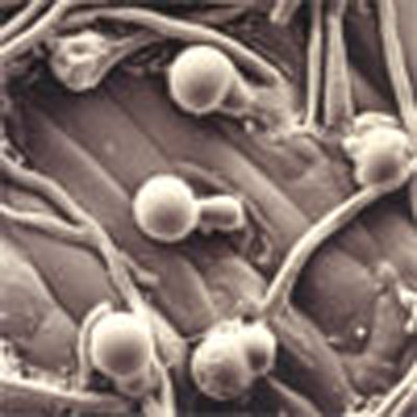- Record: found
- Abstract: found
- Article: found
Transgenerational gene silencing causes gain of virulence in a plant pathogen

Read this article at
Abstract
Avirulence ( Avr) genes of plant pathogens encode effector proteins that trigger immunity in plants carrying appropriate resistance ( R) genes. The Phytophthora sojae Avr3a gene displays allelic variation in messenger RNA transcript levels. P. sojae strains with detectable Avr3a gene transcripts are avirulent on plants carrying the R-gene Rps3a, whereas strains lacking Avr3a mRNA escape detection by Rps3a and are virulent. Here we show non-Mendelian interactions between naturally occurring Avr3a alleles that result in transgenerational gene silencing, and we identify small RNA molecules of 25 nucleotides that are abundant in gene-silenced strains but not in strains with Avr3a mRNA. This example of transgenerational gene silencing is exceptional because it is naturally occurring and results in gain of virulence in a pathogenic organism.
Abstract
 Plant pathogens encode effector proteins that trigger immunity in plants carrying
appropriate resistance genes. Here Qutob
et al. show non-Mendelian interactions between naturally occurring
Phytophthora sojae alleles that result in transgenerational gene silencing and gain of virulence in
soybean plants.
Plant pathogens encode effector proteins that trigger immunity in plants carrying
appropriate resistance genes. Here Qutob
et al. show non-Mendelian interactions between naturally occurring
Phytophthora sojae alleles that result in transgenerational gene silencing and gain of virulence in
soybean plants.
Related collections
Most cited references10
- Record: found
- Abstract: found
- Article: not found
Biological and biomedical implications of the co-evolution of pathogens and their hosts.
- Record: found
- Abstract: found
- Article: not found
Genome evolution following host jumps in the Irish potato famine pathogen lineage.
- Record: found
- Abstract: found
- Article: not found